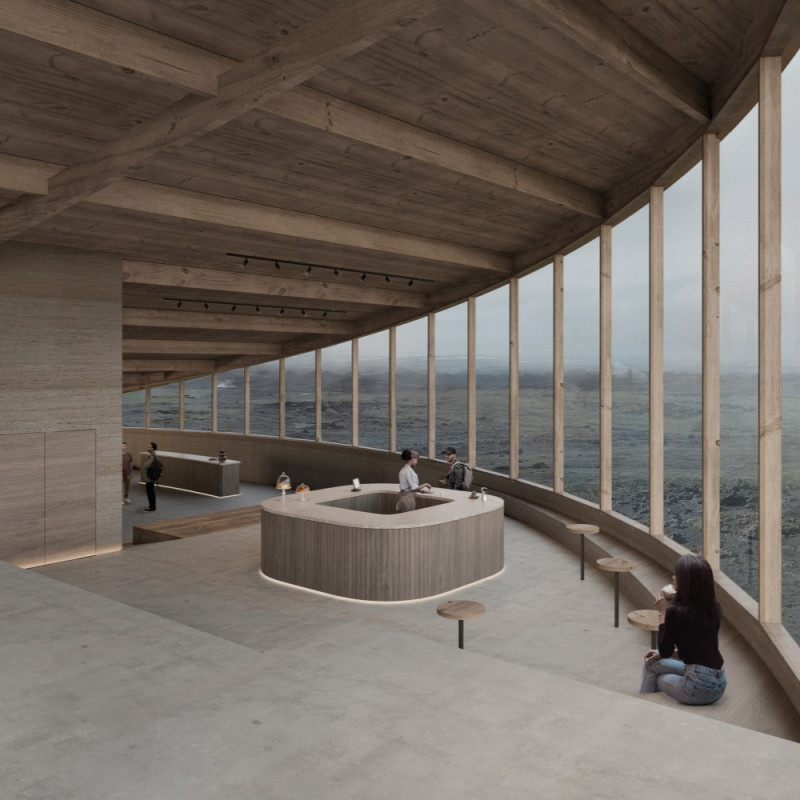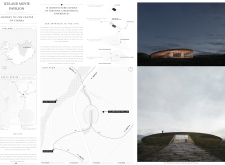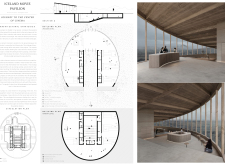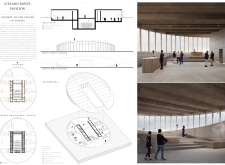5 key facts about this project
The Iceland Movie Pavilion is located near Reykjahlid, along the scenic shores of Mývatn Lake in northern Iceland. It aims to serve as a cultural landmark that enhances the cinematic experience while respecting the beauty of its natural surroundings. The design focuses on blending the pavilion with the landscape, making both architecture and nature essential parts of the visitor's journey.
Architecture Concept
The design incorporates existing urban systems and hiking trails, allowing visitors to move freely and connect with the landscape. This approach encourages exploration and interaction, enhancing the connection to the environment. The pavilion's layout emphasizes views and accessibility, reinforcing its role as an important cultural center in the region.
Spatial Organization
The pavilion is made up of two key parts: the container, which is the physical structure, and the content, which represents the cinema experience. The building takes on two distinctive shapes—an oval that opens to the landscape and a rectangular cinema that is partially set into the ground. This layout helps create a transition from the natural world to the cinematic experience, allowing visitors to engage with both film and nature.
Materiality
The materials used reflect a commitment to sustainability and a connection to tradition. The cinema walls are constructed from rammed earth, which provides good insulation for sound and temperature. The roof is made of laminated pine wood, a common material in Iceland's architectural style. Additionally, the foundation is built from reinforced concrete, ensuring solid support for the structure.
Distinct Spaces
Inside the pavilion, the design features a careful arrangement of spaces that guides visitors through different experiences. The upper level includes the reception and café areas, offering impressive views of the landscape. The mid-level houses event spaces and exhibitions. The cinema is located on the lower level, designed to rely solely on film projections for light, creating an intimate viewing experience.
The overall design demonstrates a respect for the environment. By partially integrating the structure into the terrain, the plan enhances local biodiversity and reduces visual disruption. The careful balance between the building and the landscape creates a strong connection to the unique Icelandic setting.






















































